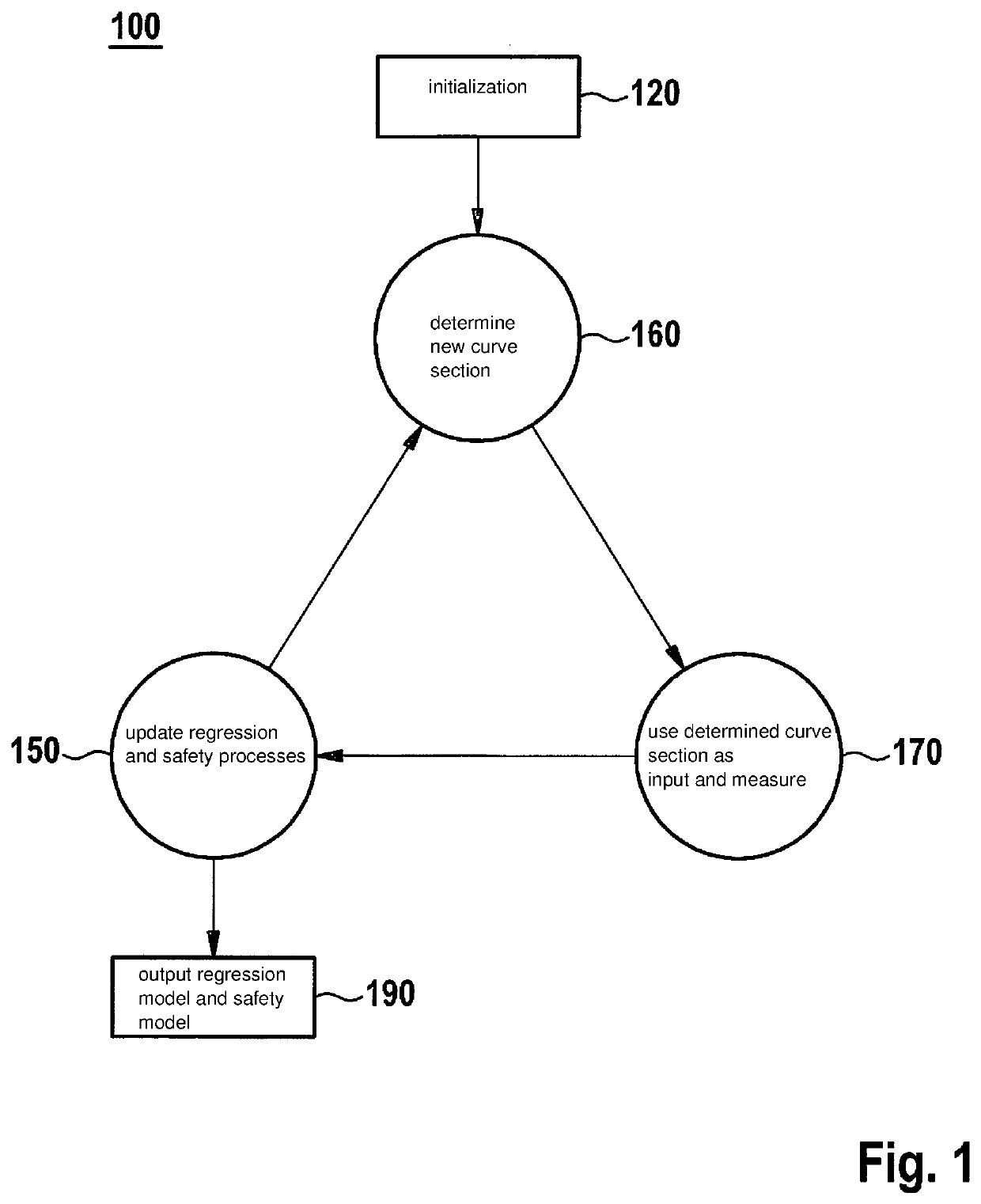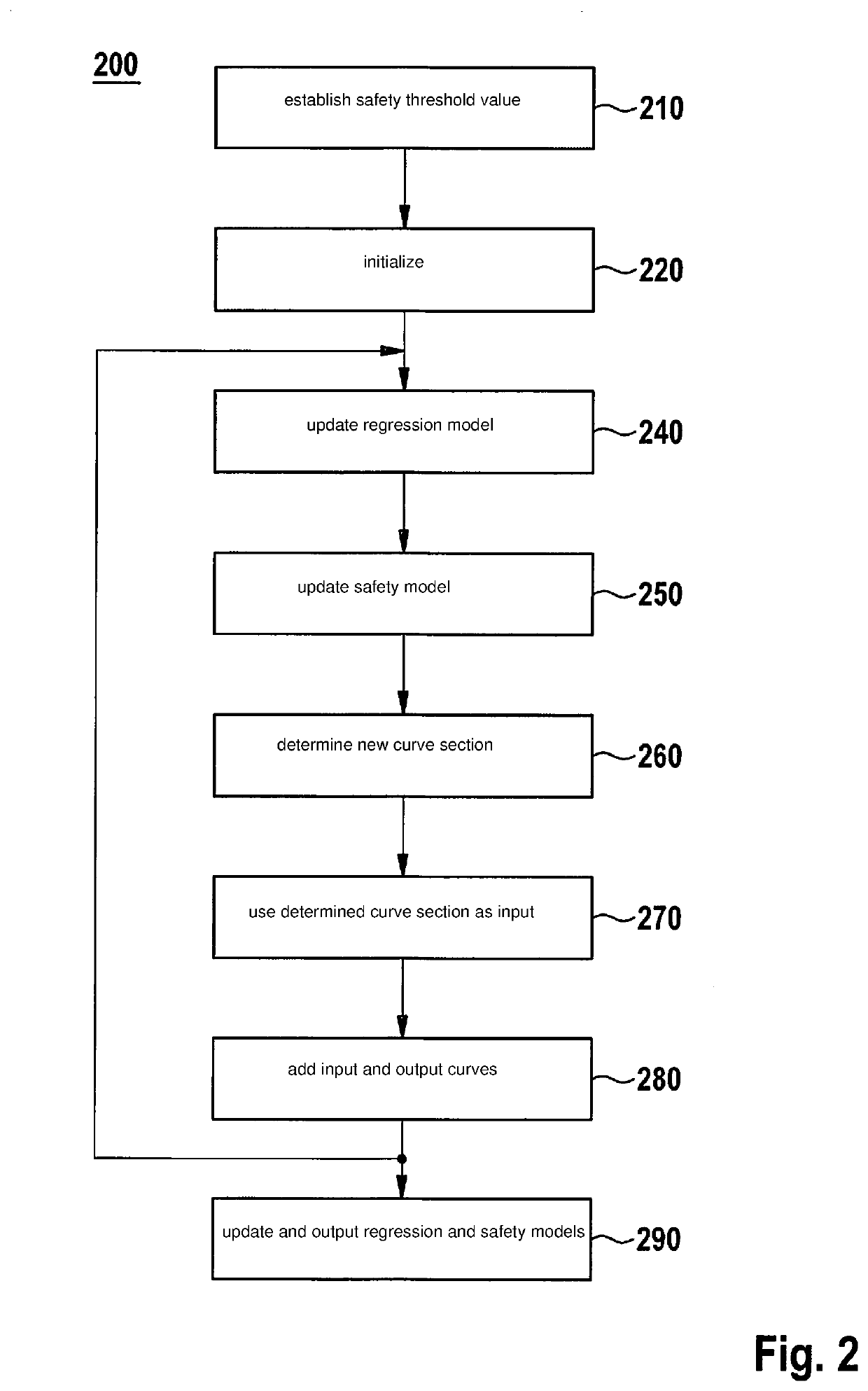Method for the safe training of a dynamic model
a dynamic model and training method technology, applied in adaptive control, process and machine control, instruments, etc., can solve problems such as robot damag
- Summary
- Abstract
- Description
- Claims
- Application Information
AI Technical Summary
Benefits of technology
Problems solved by technology
Method used
Image
Examples
Embodiment Construction
[0022]The approximation of an unknown function f: X⊂d→Y⊂ is to be achieved. In the case of time series models such as, for example, the well-known non-linear exogenous (NX) model, the input area is made up of discrete values, the so-called manipulated variables.
[0023]With xk for the point in time k, (uk, uk−1, . . . , uk−{tilde over (d)}+1) is applicable, (uk)k, uk∈π⊂d representing the discretized curve. In this case, d is the dimension of input area, π of the system, {tilde over (d)} the dimension of the NX structure and d=d·{tilde over (d)} the dimension of X.
[0024]The elements uk are measured by the physical system and need not be equidistant. For reasons of simpler notation, an equidistance is assumed by way of example. In general, the control curves are continuous signals and may be explicitly controlled.
[0025]Data in the form of n successive curve sections Dnf={τi, ρi}i=12 are observed in the learning environment of the model, the input curve τi being a matrix and being made u...
PUM
 Login to View More
Login to View More Abstract
Description
Claims
Application Information
 Login to View More
Login to View More - R&D
- Intellectual Property
- Life Sciences
- Materials
- Tech Scout
- Unparalleled Data Quality
- Higher Quality Content
- 60% Fewer Hallucinations
Browse by: Latest US Patents, China's latest patents, Technical Efficacy Thesaurus, Application Domain, Technology Topic, Popular Technical Reports.
© 2025 PatSnap. All rights reserved.Legal|Privacy policy|Modern Slavery Act Transparency Statement|Sitemap|About US| Contact US: help@patsnap.com


